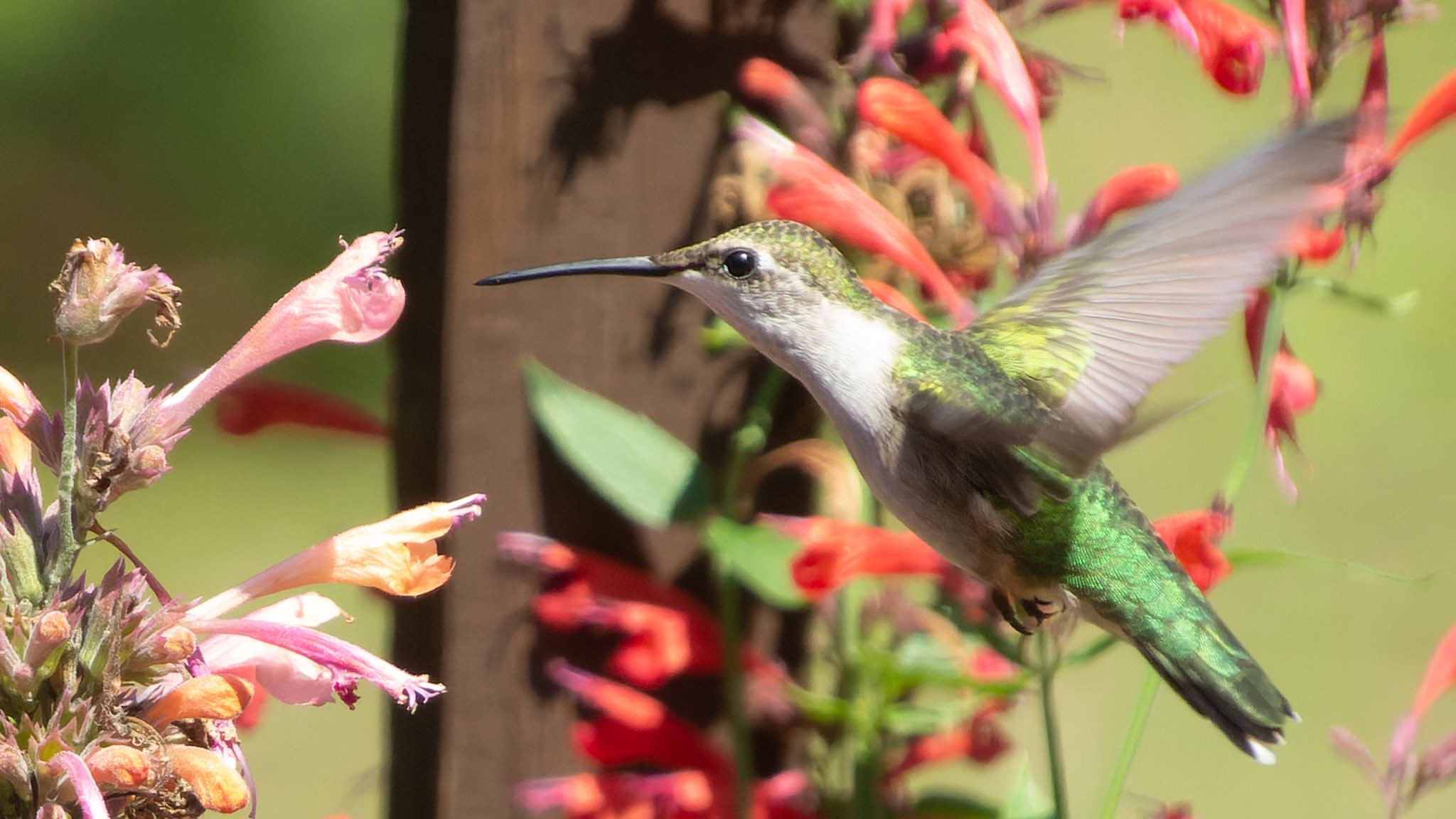I’ve always been fascinated by hummingbirds1. How could anyone not be? They are considered smart by bird standards—remembering which flowers they’ve visited and recognizing people—and their movements are captivating to watch. Their unique design draws you in, and their comfort around humans allows for longer and closer experiences than one might have with other birds.
My wife grows flowers to draw hummingbirds, but this year was the pinnacle of that endeavor. Instead of having a few agastache and zinnias, those varieties made up 90% of our deck garden.

The deck garden, facing east.
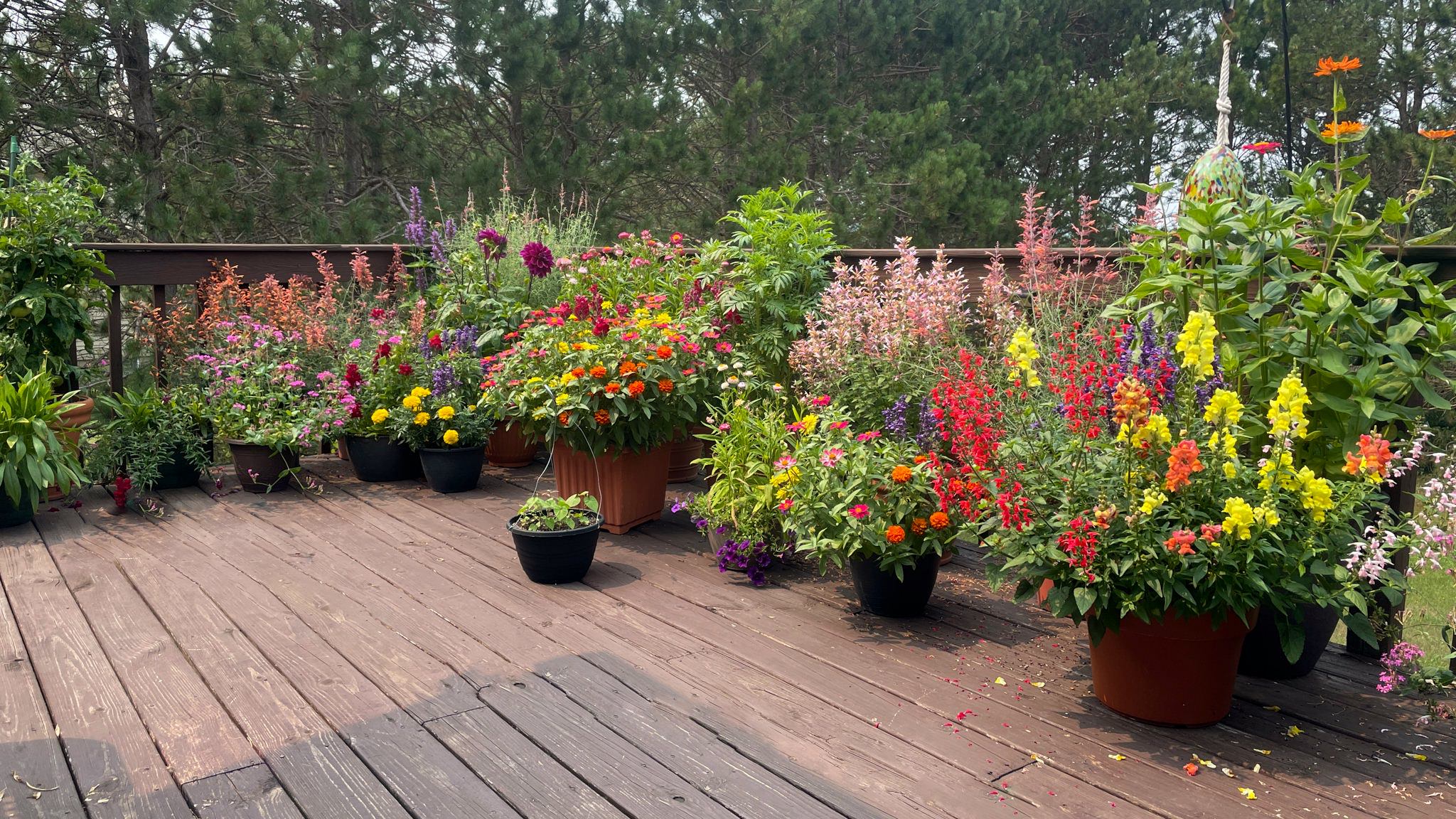
The deck garden, facing west.
It took a while for the hummingbirds to arrive this summer, but they’ve been constant companions since then. This year has been especially rewarding due to the unintended existence of an object: a clothes pin.
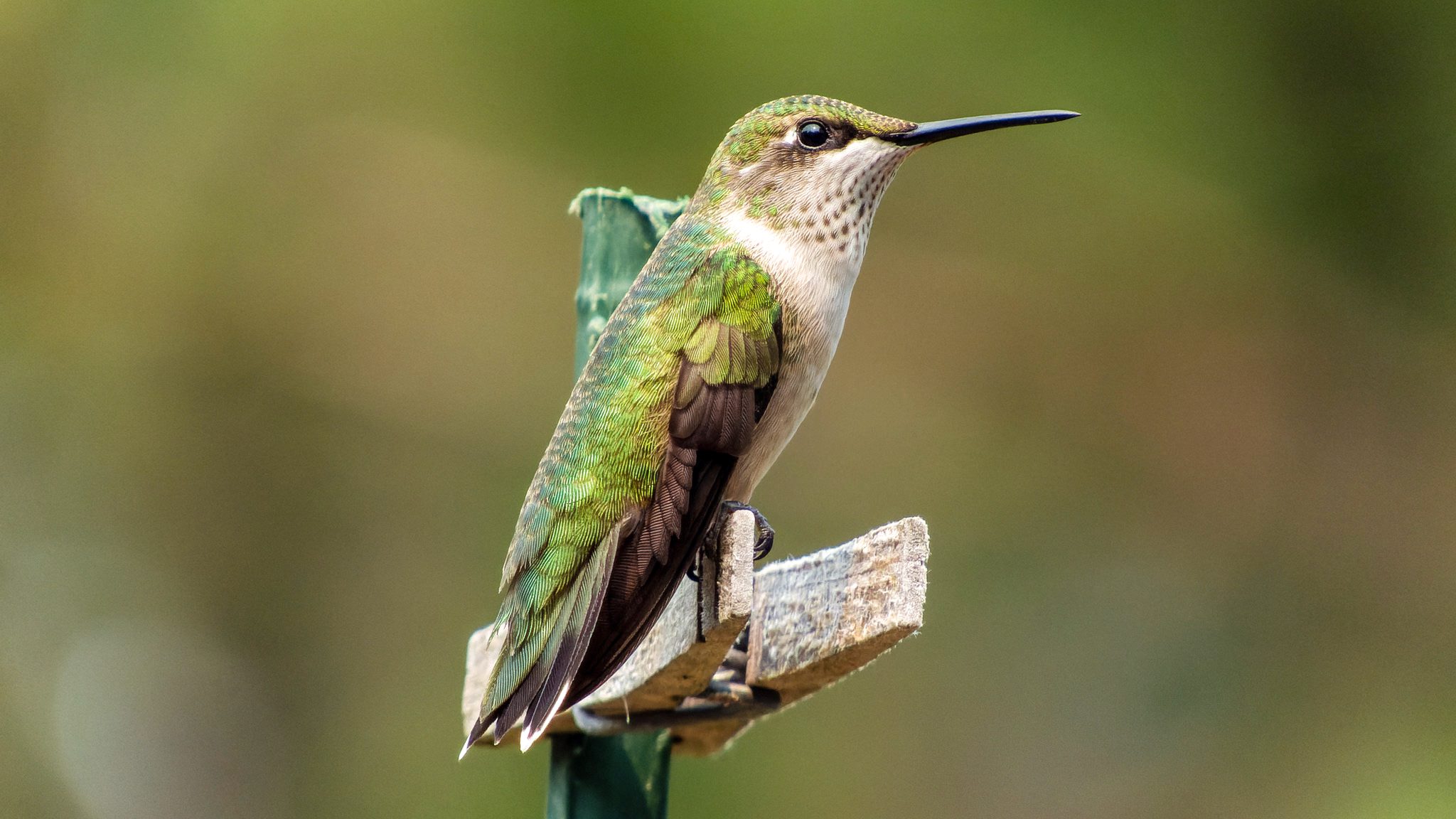
Our hummingbird sitting on her clothes pin perch.
The clothes pin was clipped to a gardening pole and held a small pinwheel. The pinwheel was taken down for the winter and never put back. In the past, the hummingbirds would feed on the flowers and then fly off into the trees, but the clothes pin drew the attention of one of the females and she began using it as a perch. She spends most of her time there, allowing us an opportunity to see behaviors that have always occurred away from our view. She’s treated us to preening, scratching, tongue flicking, chirping, the occasional yawning, and bathing during a rain shower (where she extends her wings and tips her head to the sky with her eyes closed before shaking off the water).
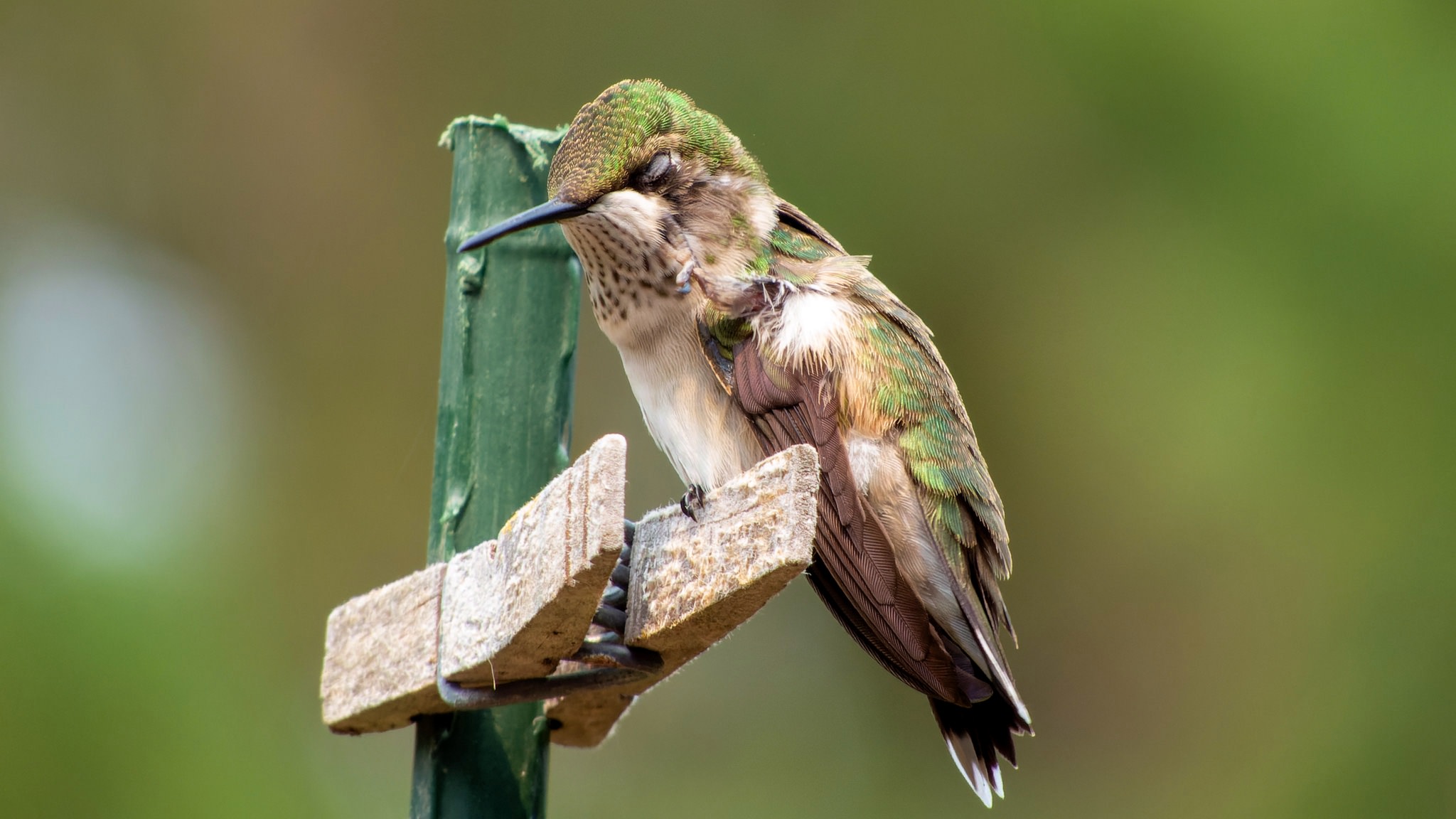
The hummingbird scratching her head.
She’s accustomed to our presence, so we can sit outside at our table while she feeds or sits on her perch. On occasion she’ll come over to investigate us, and the thrumming of her wings makes those times quite obvious. Ironically, they are more social with people than they are with their own kind—hummingbirds are fiercely territorial, and she is no exception. There is a male that we’ve rarely seen, but another female tries to feed from time to time and she is chased away within seconds. Sometimes, they’ll do a mid-air dance that is incredible to watch and shows off their maneuverability.
I find great joy in watching animals, even when those moments are fleeting, but this summer’s hummingbird experience has been a highlight. It was intentional on our part—providing a natural food source to draw them—but it also feels intentional on her part. She could use the trees close to the deck garden as an overwatch, but she picked the clothes pin instead and is not frightened by us. Her reliable, consistent presence creates a sense of a relationship, as though she is our hummingbird and we are her people.
Studies suggest that hummingbirds return to the same places when they migrate. I hope that’s the case. I’d love to have her back next year.
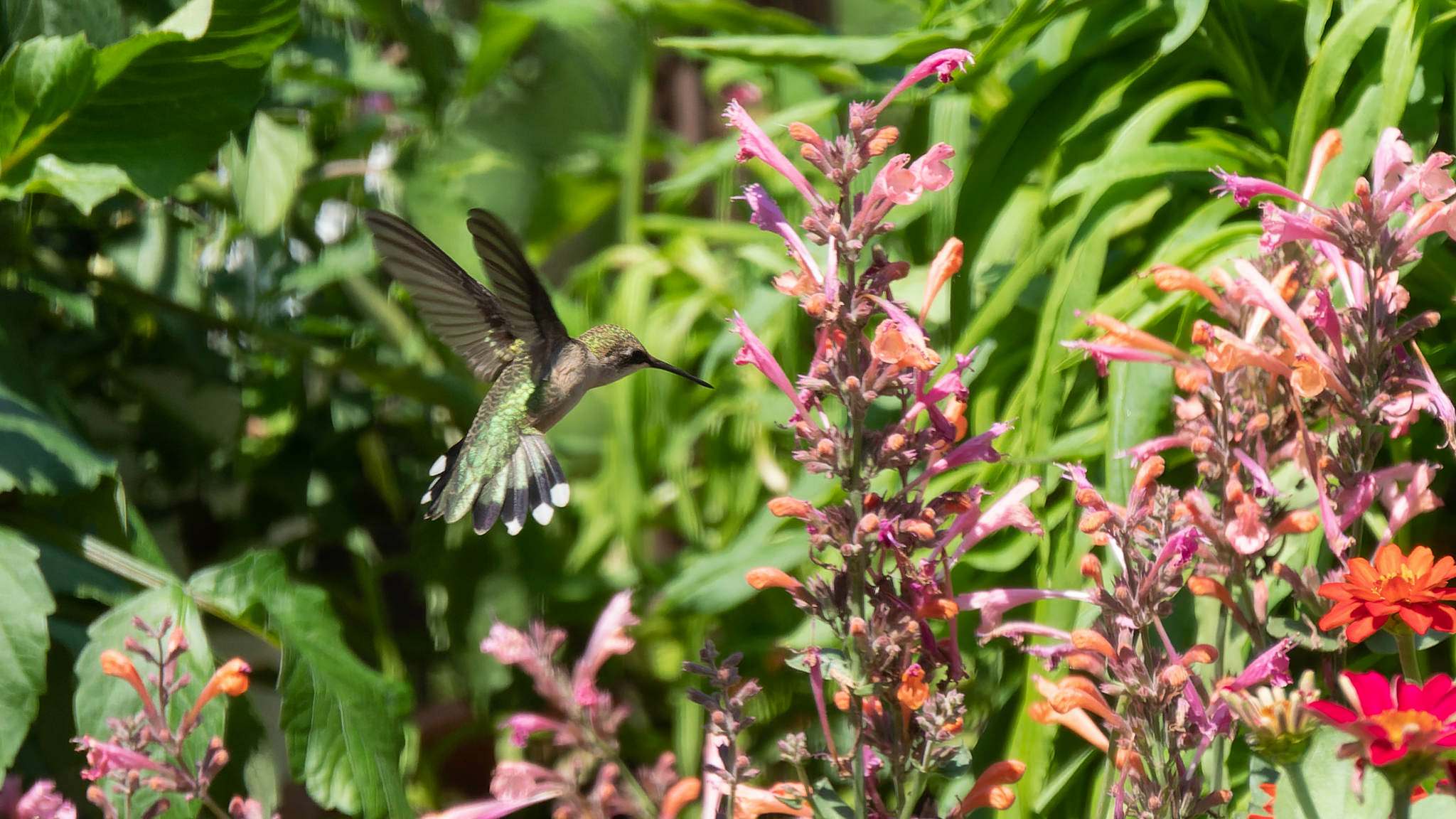
Maneuvering to feed.
World of Hummingbirds has a good overview of the hummingbird’s anatomy and how it supports its distinctive behavior. ↩︎
